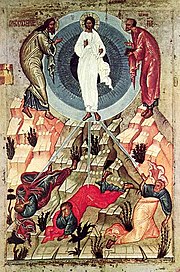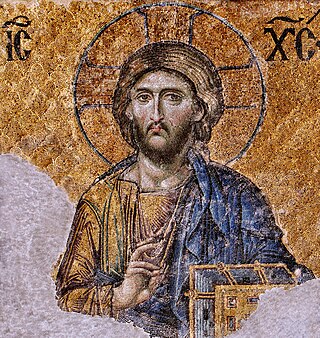
The Philokalia is "a collection of texts written between the 4th and 15th centuries by spiritual masters" of the mystical hesychast tradition of the Eastern Orthodox Church. They were originally written for the guidance and instruction of monks in "the practice of the contemplative life". The collection was compiled in the 18th century by Nicodemus the Hagiorite and Macarius of Corinth based on the codices 472, 605, 476, 628 and 629 from the library of the monastery of Vatopedi, Mount Athos.

Christian mysticism is the tradition of mystical practices and mystical theology within Christianity which "concerns the preparation [of the person] for, the consciousness of, and the effect of [...] a direct and transformative presence of God" or Divine love. Until the sixth century the practice of what is now called mysticism was referred to by the term contemplatio, c.q. theoria, from contemplatio, "looking at", "gazing at", "being aware of" God or the Divine. Christianity took up the use of both the Greek (theoria) and Latin terminology to describe various forms of prayer and the process of coming to know God.
Devotio Moderna was a movement for religious reform, calling for apostolic renewal through the rediscovery of genuine pious practices such as humility, obedience, and simplicity of life. It began in the late 14th-century, largely through the work of Gerard Groote, and flourished in the Low Countries and Germany in the 15th century, but came to an end with the Protestant Reformation. It is most known today through its influence on Thomas à Kempis, the author of The Imitation of Christ, a book which has proved highly influential for centuries. The Devotio Moderna wrote in IJssellands, a written language which stood in between Middle Dutch and Middle Low German.
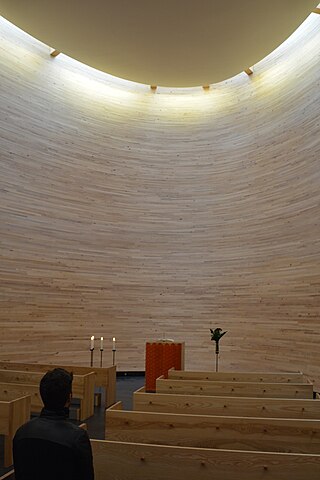
In a religious context, the practice of contemplation seeks a direct awareness of the divine which transcends the intellect, often in accordance with prayer or meditation.
In Christian communities, Bible study is the study of the Bible by people as a personal religious or spiritual practice. In many Christian traditions, Bible study, coupled with Christian prayer, is known as doing devotions or devotional acts. Many Christian churches schedule time to engage in Bible study collectively. The origin of Bible study groups has its origin in early Christianity, when Church Fathers such as Origen and Jerome taught the Bible extensively to disciple Christians. In Christianity, Bible study has the purpose of "be[ing] taught and nourished by the Word of God" and "being formed and animated by the inspirational power conveyed by Scripture".

The Desert Fathers or Desert Monks were early Christian hermits and ascetics, who lived primarily in the Scetes desert of the Roman province of Egypt, beginning around the third century AD. The Apophthegmata Patrum is a collection of the wisdom of some of the early desert monks and nuns, in print as Sayings of the Desert Fathers. The first Desert Father was Paul of Thebes, and the most well known was Anthony the Great, who moved to the desert in AD 270–271 and became known as both the father and founder of desert monasticism. By the time Anthony had died in AD 356, thousands of monks and nuns had been drawn to living in the desert following Anthony's example, leading his biographer, Athanasius of Alexandria, to write that "the desert had become a city." The Desert Fathers had a major influence on the development of Christianity.

Christian meditation is a form of prayer in which a structured attempt is made to become aware of and reflect upon the revelations of God. The word meditation comes from the Latin word meditārī, which has a range of meanings including to reflect on, to study, and to practice. Christian meditation is the process of deliberately focusing on specific thoughts and reflecting on their meaning in the context of the love of God.
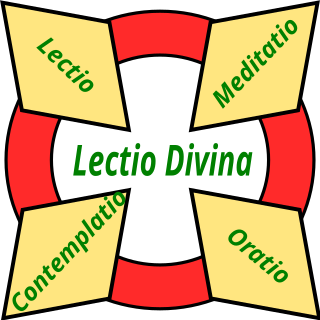
In Western Christianity, Lectio Divina is a traditional monastic practice of scriptural reading, meditation and prayer intended to promote communion with God and to increase the knowledge of God's word. In the view of one commentator, it does not treat Scripture as texts to be studied, but as the living word.
Centering Prayer is a form of Christian contemplative prayer, to center awareness on the presence of God. This modern movement in Christianity was initiated by three Trappist monks of St. Joseph's Abbey in Spencer, Massachusetts in the 1970s, Fr. William Meninger, Fr. M. Basil Pennington and Abbot Thomas Keating, in response to the growing popularity of Asian meditation methods.
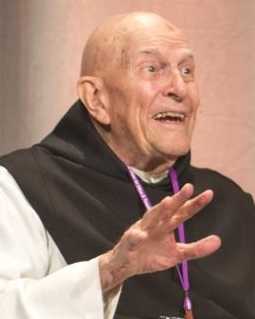
Thomas Keating, O.C.S.O. was an American Catholic monk and priest of the Order of Cistercians of the Strict Observance. Keating was known as one of the principal developers of Centering Prayer, a contemporary method of contemplative prayer that emerged from St. Joseph's Abbey, Spencer, Massachusetts.
Catholic spirituality includes the various ways in which Catholics live out their Baptismal promise through prayer and action. The primary prayer of all Catholics is the Eucharistic liturgy in which they celebrate and share their faith together, in accord with Jesus' instruction: "Do this in memory of me." The Catholic bishops at the Second Vatican Council decreed that "devotions should be so drawn up that they harmonize with the liturgical seasons, accord with the sacred liturgy, are in some fashion derived from it, and lead the people to it, since, in fact, the liturgy by its very nature far surpasses any of them." In accord with this, many additional forms of prayer have developed over the centuries as means of animating one's personal Christian life, at times in gatherings with others. Each of the religious orders and congregations of the Catholic church, as well as lay groupings, has specifics to its own spirituality – its way of approaching God in prayer to foster its way of living out the Gospel.
M. Basil Pennington O.C.S.O. (1931–2005) was an American Roman Catholic Trappist monk and priest. He was a leading spiritual writer, speaker, teacher, and director.
Quiet time, also stated as heart-to-heart time, or one-on-one time with the creator, is a regular individual session of Christian spiritual activities, such as prayer, private meditation, contemplation, worship of God or study of the Bible. The term "quiet time" or "sacred time" is used by 20th-century Protestants, mostly evangelical Christians. It is also called "personal Bible study" or "personal devotions". Rick Warren points out that it has also been called "morning watch" and "appointment with God".

Christian prayer is an important activity in Christianity, and there are several different forms used for this practice.
The rosary is one of the most notable features of popular Catholic spirituality. According to Pope John Paul II, rosary devotions are "among the finest and most praiseworthy traditions of Christian contemplation." From its origins in the twelfth century the rosary has been seen as a meditation on the life of Christ, and it is as such that many popes have approved of and encouraged its recitation.

Jean Leclercq, O.S.B., was a French Benedictine monk, the author of classic studies on Lectio Divina and the history of inter-monastic dialogue, as well as the life and theology of Saint Bernard of Clairvaux. LeClercq is perhaps best known in the English speaking world for his seminal work The Love of Learning and the Desire for God: A Study of Monastic Culture.
Guigo II, sometimes referred to as Guy, or by the moniker "the Angelic", was a Carthusian monk and the 9th prior of Grande Chartreuse monastery, from 1174 to 1180.

The Bernardine Cistercians of Esquermes are a small branch of the Cistercian Order. They follow the Rule of St Benedict, and co-operate with the apostolic mission of the Catholic Church through educational activities and hospitality. There are eight monasteries of nuns in six countries, united by a central Government.
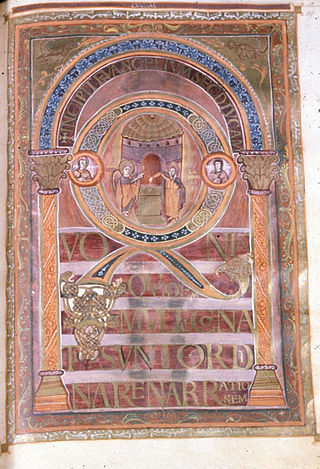
In Christianity, Lectio continua refers to the practice of reading Scripture in sequence over a period of time. Each reading etc. begins where the previous session ended. For instance, every Sunday a section of the Bible can be read such that each reading resumes where the previous one ended.
In Christianity, Lectio Sacra is a Latin term meaning sacred reading which refer to the reading of Scripture.



